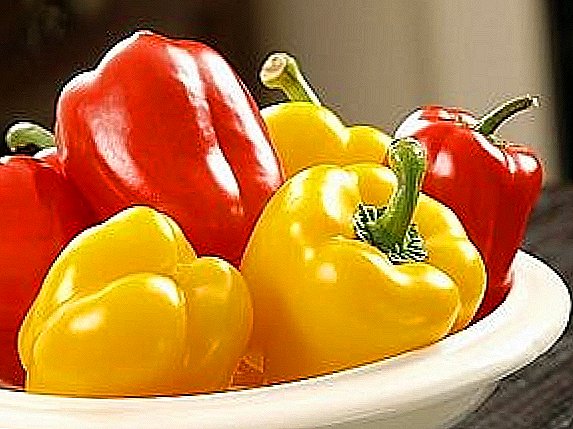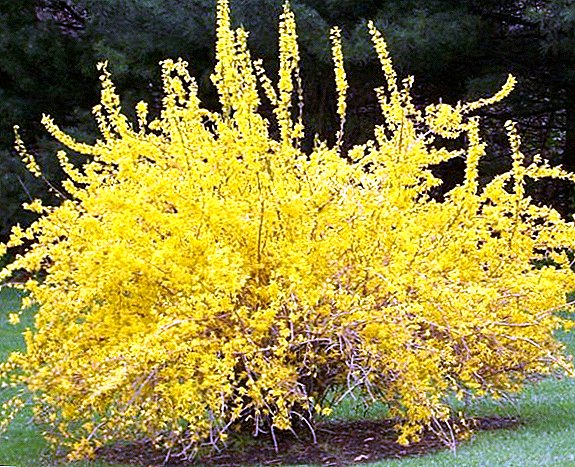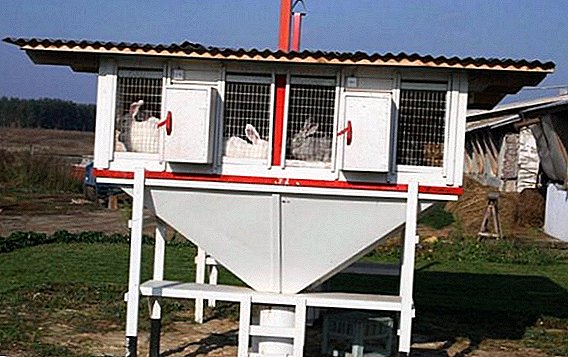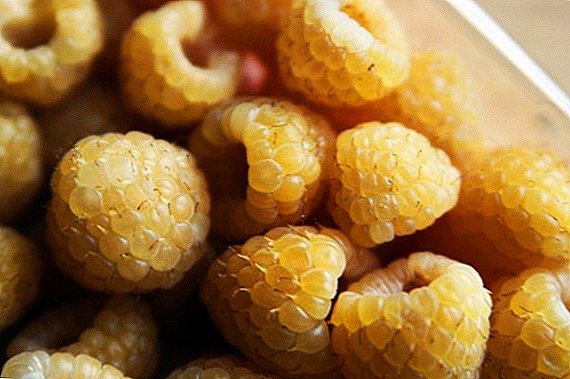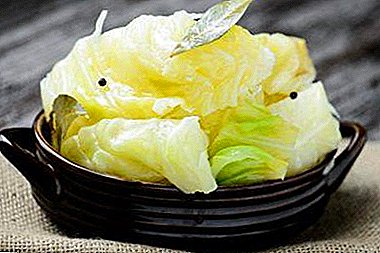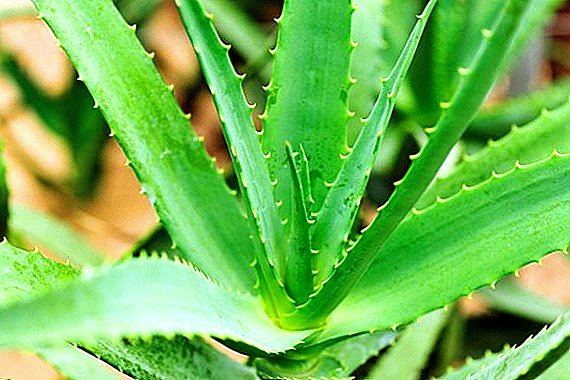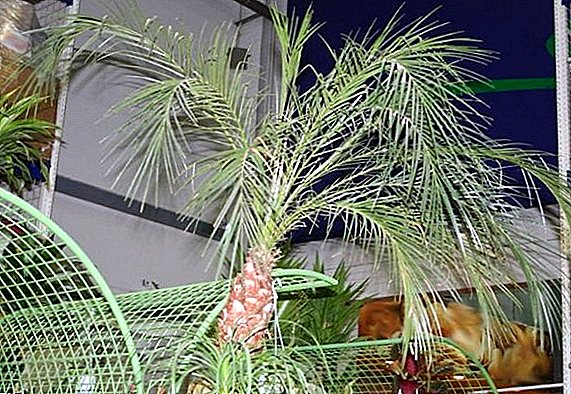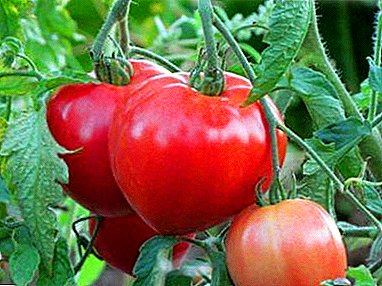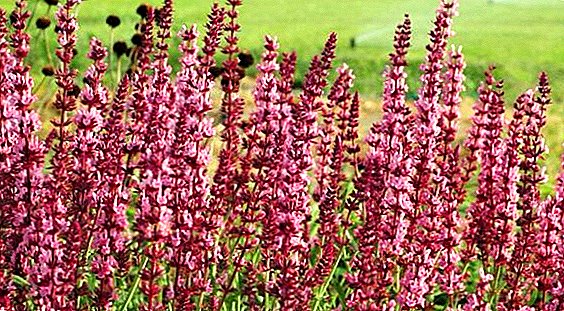 In this article we will talk about salvia and its varieties, learn how to multiply and care for the plant. We learn how to get rid of pests of salvia and the medicinal properties of this plant.
In this article we will talk about salvia and its varieties, learn how to multiply and care for the plant. We learn how to get rid of pests of salvia and the medicinal properties of this plant.
Did you know? Salvia (Salvia) from Latin is translated as "promoting health." Another name for sage is salvia.
Varieties and types of salvia
Salvia belongs to the yasnekovy family, which has about 900 species worldwide. This plant is found in temperate regions. Salvia prefers sunny places such as meadows, fields, wastelands and light forests.
In the common people, the medicinal plant was called sage, and ornamental flowers were called salvia. Plants are divided into heat-loving and cold-resistant plants.
Cold-resistant species include such flowers:
1. Salvia forest is an ornamental plant that blooms with blue flowers of different shades at the beginning of summer. On the basis of this species several more hybrids were created: Schneehugel, Rose Queen, Blauhugel. 
2. Salvia Dubravnaya - cold-resistant plant, which is very famous for its varieties of purple and pink flowers, namely: Caradonna and Schwellenburg. 
3. Salvia meadow - purple, pink or white flowers that bloom in summer. The most famous variety is Haematodes. 
4. Salvia Mutovchataya - an ornamental plant with a lilac color of flowers. It blooms from July to autumn. A well-known variety is Purple Rain. 
5. Salvia officinalis - an ornamental and medicinal plant. 
6. Salvia blue - an ornamental plant that blooms with small light blue flowers from July to mid-October. 
7. Salvia Japanese - the plant comes from Japan and blooms from August to October with yellow flowers. 
Thermophilic salvia include the following types:
1. Salvia marsh - heat-loving plant, comes from South America. It grows up to 2 m in height and has blue flowers. Flowering begins in late summer and lasts until mid-autumn. 
2. Salvia sparkling - annual, blooms from June until the start of frost. Plant color is orange-red to dark purple. 
3. Salvia red - a thermophilic biennial, originating from South America. Flowering begins at the end of summer. Color - white, pink and red. The most popular species are Lady in Red and Forest Fire. 
4. Spanish Salvia - an ornamental plant with purple flowers. Flowering in May and June. It has similarity with sage and is used in cooking. 
5. Powdery salvia is an ornamental plant that blooms from summer to autumn. Color - bright blue. The most famous variety is Victoria. 
6. Salvia myrtle - shrub, arrived from Mexico. Bright red flowers are shown in the middle of summer and until the end of the first frost. 
7. Salvia slim - a tall plant that appears in late summer. Color - scarlet. Salvia is used in desserts or fruit cocktails, as they have an unusual fruit flavor. Notable varieties are Scarlet Pineapple and Tangerine Sage. 
8. Bleached salvia is a Mexican plant with black flowers that are half hidden in a silver cup. 
9. Salvia nutmeg (clary sage) is a perennial, the flowering of which continues in spring and summer. Color - cream-purple, pink or blue. Essential oils are made from clary sage, which are used in medicine and perfumery. 
10. Salvia uncovered - Mexican heat-loving plant that blooms from summer to mid-autumn. Color - bright blue. Famous varieties are Cambridge Blue and Blue Angel. 
11. Salvia mountain is a Texan plant that blooms from late summer until autumn. Color - red. This variety is little known for gardeners. 
Cultivation and care
Growing salvia is an easy task. This plant loves a well-groomed and moderately moist land. It should be remembered when you need to plant sage. The timing of sowing salvia depends on the variety, but the best time for planting is February-March. Flowering salvia begins 4-5 months after sowing.
Preparation of soil and tanks for planting
To get started is to prepare a box for seedlings. The most common is wooden. The bottom is filled with claydite and soil mixture so that it remains about 2 cm to the top. After this, the substrate is abundantly wetted and covered with glass, left overnight.
Seed preparation and sowing
 It should be remembered how to properly plant salvia seeds so that the plant grows into gorgeous bushes with beautiful flowers. Salvia seeds are small, and to facilitate sowing they are mixed with sand. Grains are sown on the surface of the earth. Then they should be moistened with warm water from the sprayer and sprinkled with a thin layer of soil for 1-2 mm, after which they moisten the ground again and cover the top of the box with glass. It is necessary to adhere to the optimum temperature - + 25 ° С.
It should be remembered how to properly plant salvia seeds so that the plant grows into gorgeous bushes with beautiful flowers. Salvia seeds are small, and to facilitate sowing they are mixed with sand. Grains are sown on the surface of the earth. Then they should be moistened with warm water from the sprayer and sprinkled with a thin layer of soil for 1-2 mm, after which they moisten the ground again and cover the top of the box with glass. It is necessary to adhere to the optimum temperature - + 25 ° С.
Seedling care
Care salvia seedlings is very simple. After the seeds gave the first shoots, the box is exposed to the sun. Light day for seedlings is 12 hours. Land can not be over-wetted, but it should not remain dry. Excessive watering leads to blackleg disease (rotting stem base). If the disease has been noticed, remove the glass and sprinkle the soil with dry sand.
 Top dressing for salvia is very useful. Carry it worth twice before landing in open ground. When the seedlings appear leaves, it means that they can be transplanted into separate pots. After transplanting salvia watered, and the pot is covered with paper.
Top dressing for salvia is very useful. Carry it worth twice before landing in open ground. When the seedlings appear leaves, it means that they can be transplanted into separate pots. After transplanting salvia watered, and the pot is covered with paper.
Watering, dressing and picking
Your next task is to grow seedlings with a good root system. This will help Salvia quickly settle down in the new soil. Do not forget about picking sage. For this, the seedlings dive twice. The first time - with the appearance of three of these sheets. Sprouts are transplanted into other boxes at a distance of 6 cm from each other. The second time occurs three weeks after the first picks. Sprouts are planted in pots, the diameter of which is 12 cm.
When 3-4 pairs of leaves appear, it is worth starting to pinch the salvia. This will provide you with thick bushes. Since April, the shoots need to begin to harden. For this night temperature is reduced to 10 ° C.
Landing in open ground
When will the threat of spring frosts, salvii planted in open ground at a permanent place. Salvias love sunny places and nutritious land. Between plants, the distance should be 25-30 cm. Before planting, fertilize the landing site with humus. After planting, the plants should be removed in a timely manner and weeds should be fed with mineral fertilizers.
 Regular watering the plant is not worth it, but in the summer heat, salvia may suffer from a lack of moisture. If it starts to wither, wait for the evening and water the plant. This will give him the same look.
Regular watering the plant is not worth it, but in the summer heat, salvia may suffer from a lack of moisture. If it starts to wither, wait for the evening and water the plant. This will give him the same look.
Pruning plants
Pruning stimulates the growth of shoots. Salvia rooted easily, so it should be cut so that the branch could take root. This procedure should be carried out in the fall or spring. Cut need lignified shoots, leaving a few centimeters of buds and young greens. Cut it at an angle with a clean knife. Perennial salvia needs pruning annually. Also, do not forget about such a procedure as diving Salvia, because this is what will provide you with a chic big bush.
Did you know? It used to be that if you plant sage in your garden, it will prolong your life.
Reproduction salvia
Most often they buy already grown salvia with blossoming flowers. But the seeds give more interesting varieties than grown in pots. If your windows overlook the south-east, south-west or south side - boldly grow this plant with your own hands. The plant can be propagated in four ways: by seeds, cuttings, air layouts and dividing the bush.
Seeds
Reproduction of Salvia seeds does not require special knowledge or effort.
It is necessary not to miss the favorable moment for collecting seeds, as they quickly fall off. As soon as the lower flowers turn brown, the shoots selected for seed are cut and placed in a separate box for ripening.
 During the breeding process is to be careful and attentive. It is possible to sow seedlings before winter, and in spring the seedlings are already seated on a permanent place. But, unfortunately, this method does not always produce results, as the seeds do not survive the winter for various reasons. It is best to conduct breeding in the spring and at home. To do this, the earth is poured into a small box, and the seeds are sown into it. For the initial transplant, after the appearance of adult sheets, suitable small pots. In the first days of summer, it is already possible to land young salvias in the ground. The soil should be sandy and fertile.
During the breeding process is to be careful and attentive. It is possible to sow seedlings before winter, and in spring the seedlings are already seated on a permanent place. But, unfortunately, this method does not always produce results, as the seeds do not survive the winter for various reasons. It is best to conduct breeding in the spring and at home. To do this, the earth is poured into a small box, and the seeds are sown into it. For the initial transplant, after the appearance of adult sheets, suitable small pots. In the first days of summer, it is already possible to land young salvias in the ground. The soil should be sandy and fertile.
Important! Salvia easily crossed, so you should plant different varieties in different areas.
Cuttings
Propagating salvia by cutting is not very difficult. This requires cuttings cut into a length of about 10-15 cm. This is best done in the evening. Cuttings rooted in containers with water, shielded from sunlight. Leaves that fade on the cuttings should be removed.
Roots appear in two weeks. Planting should be carried out a week after the appearance of the roots. Place immediately on a permanent place. The first days it is better to shade the plant from the sun, often water and spray the leaves. 
Air layouts
Propagating salvia by air layouts is quite simple. A branch of a plant is pressed to the ground and secured with a metal bracket. New roots germinate in a few months, and the branch can be cut from the main bush. Then, together with a lump of earth, with the help of a scoop, it can be transplanted to a new place.
Dividing bush
This procedure is advised to conduct in late August or early September. This type of breeding is more suitable for perennials. You need to dig up the earth well and prepare it with fertilizer. Remember that if you plant plants too thick and close, the bushes will be pulled in height, and there will be few flowers on them. If you plant salvia rarely, the bushes will grow in breadth. The optimal distance is 45-50 cm between the rows and 20-25 cm between the bushes.
Medicinal properties of salvia
 Dried sage herb is a traditional folk remedy for diseases. But several sage species have medicinal properties - medicinal, nutmeg, Ethiopian and Spanish. Other species also have medicinal properties, but they are not as pronounced as those given above.
Dried sage herb is a traditional folk remedy for diseases. But several sage species have medicinal properties - medicinal, nutmeg, Ethiopian and Spanish. Other species also have medicinal properties, but they are not as pronounced as those given above.
Did you know? At the time of the plague, salvia was considered the number one remedy for treating and restoring the body.
Salvia leaves have anti-inflammatory, disinfectant and hemostatic properties.
Use the plant for rinsing with the following ailments:
- Bleeding and gum disease;
- Stomatitis;
- Bronchitis;
- Angina;
- Catarrh of the upper respiratory tract.
 Foreign doctors recommend using sage for ulcers, gastritis, liver and kidney diseases, gastrointestinal inflammation and for the treatment of purulent wounds. Collect the leaves and tops of sage stalks during the budding period.
Foreign doctors recommend using sage for ulcers, gastritis, liver and kidney diseases, gastrointestinal inflammation and for the treatment of purulent wounds. Collect the leaves and tops of sage stalks during the budding period.
Then they are dried and used in traditional medicine or in the manufacture of cosmetics. Sage has a strong smell and a bitter taste.
Important! It is recommended not to take sage for epilepsy, strong coughing and pregnancy. At higher doses, sage causes irritation of the mucous membranes.
Major pests and diseases of salvia
Salvia ornamental plants are susceptible to various pests and diseases. There are preventive measures to protect the plants. You must follow the rules of care and watering, as well as make feeding. If it is wrong to care for salvia, then there is a risk of getting various fungi, bacteria and viruses. Long-term use of land in the boxes leads to the accumulation of parasites in it - pathogens. It is worth recalling that at home, methods of soil disinfection, both chemical and thermal, give little results. Before re-planting the plants in the boxes is to change the ground before each planting. Then you will definitely grow healthy and beautiful salvia.
Diseases and pests of leaves and stems: symptoms and treatment
Most often, the leaves and stalks of salvia are damaged by snails and slugs. The fight against them is very simple. Pest cleaning is done mechanically.
Also other pests salvia spoil the appearance of the leaves and stems of the plant. For example, aphid. This insect eats juices rich in carbohydrates and needs amino acids in them. In this case, it allocates a large number of paddy. It attracts other types of insects. Aphids are one of the most harmful garden pests. Aphid looks like this: 
Aphid settles on the leaves and sucks the juice from fresh greens. In addition, this insect can carry viral infections - galls. They weaken the salvia and cause the death of the plant.
From diseases of salvia, powdery mildew can be distinguished. Pathogens are pseudo-fungi-oomycetes.
The symptoms of the lesion are very similar to the symptoms of powdery mildew. But on the leaves white scurf forms on the underside of the leaf, and on the top appear yellow or brown spots. Leaves dry out or rot.
The disease develops most often on plants that germinate in wet areas. In order to neutralize this disease, you should spray the plant with drugs of copper.
Diseases and pests of flowers: symptoms and treatment
 Thrips are small insects that love to eat a crop. They enter the apartments through the windows. Thrips cause pollen to fall and reduce the period of flowering for salvia.
Thrips are small insects that love to eat a crop. They enter the apartments through the windows. Thrips cause pollen to fall and reduce the period of flowering for salvia.
In order to check whether the plant is infected with these insects, it is enough to pluck a few flowers and shake over the black paper.
In order to get rid of this pest, you should carry out two or three treatments every 10 days. Doing this is worth systemic insecticides.
Diseases and pests of the roots: symptoms and treatment
Most often, salvia roots are subject to diseases called blackleg and root rot. These diseases are caused by soil fungi: Fusarium, Pythium or Phytophthora.
With these ailments, the root neck is affected, and its tissue turns black. The roots gradually turn brown and die. Salvia itself may die within four days. Brown affected areas are formed in the basal part of the stem of adult salvia. Plants begin to develop worse, but do not die. Pink or brown patches can be seen on affected tissues. Color depends on the type of pathogen. The main source of infection is soil.
In order to avoid this problem, it is worth changing the soil before each new planting and feeding the seedlings with microelements.
 There are also active biological products: narcissus, zircon and immunocytophyte. This increases the resistance of the plant. When rot occurs, spray the soil and plants with chemicals: previure, ridomil and topsin-M. If you do not want to spoil your plants with chemicals, we recommend watering the plant and the soil with a weak pink solution of potassium permanganate.
There are also active biological products: narcissus, zircon and immunocytophyte. This increases the resistance of the plant. When rot occurs, spray the soil and plants with chemicals: previure, ridomil and topsin-M. If you do not want to spoil your plants with chemicals, we recommend watering the plant and the soil with a weak pink solution of potassium permanganate.
Preventive Pest Control
Prevention is the best way to protect your salvia from ailments and parasites. To do this, it is necessary to choose the right varieties that are resistant to diseases and pests. Do not forget about how to plant salvia so that it is easier to clean the plant from parasites. You should also follow the rules of sanitary conditions, keep the plant clean and remove weeds or diseased plants in time.
To destroy pests or diseases in the open field, you can apply a spraying of tobacco broth, mixing it with 4 g of green soap in 1 liter of broth.
Now that we know all about salvia, with peace of mind we can begin to grow this beautiful plant on our own at home. We looked at how to properly plant and care for salvia, and also learned about the healing properties of this plant. Do not forget about the pests that must be timely deal with.


